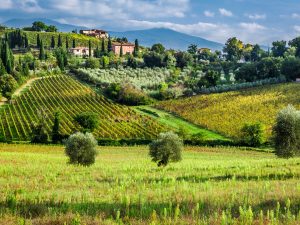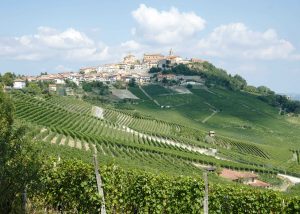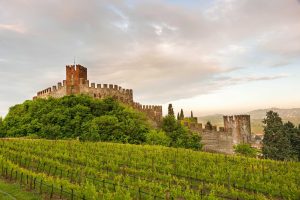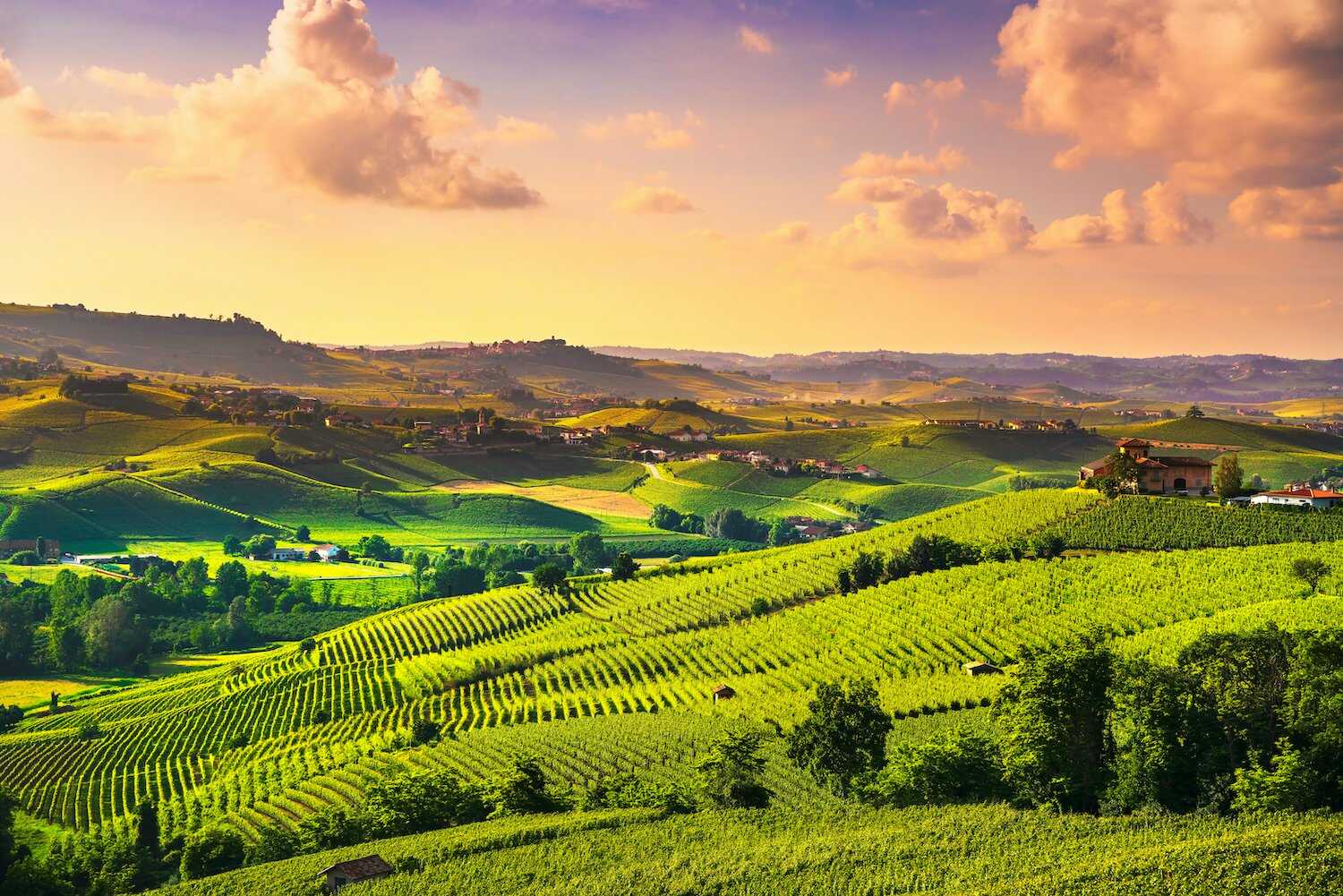Italy, the birthplace of Chianti, Barolo, Prosecco, Valpolicella, Soave, Orvieto, and Etna, has a long and varied wine history dating back over four thousand years. Famous for its diversity of grape varieties and wine styles, from the misty, lush rolling hills of the north to the sun-drenched hills of Tuscany, Umbria, the Marche, and Abruzzo, to the southern lands of Puglia, Calabria, and Basilicata, while not forgetting the islands of Sicily and Sardinia.
Having a long and varied wine history dating back over four thousand years. Italy is famous for its bewildering diversity of grape varieties and wine styles, but it is also significant for the sheer volume of wine it produces: a little more than 5.6 billion liters (about 1.5 billion US gallons) in 2018 from 695,000 hectares (1.7 million acres) of vineyards.
The Italian government’s wine classification and labeling system employ a four-tier quality hierarchy of over 500 DOCG, DOC/DOP, and IGT titles.
Popular Wine Regions and Grape Varieties in Italy
Each region has its own signature wine style. Some are well-known because they are mass-produced and can be found all over the world, while others are well known for their consistently high quality.
Tuscany

Tuscany is one of Europe’s most well-known and prolific wine regions. It is popular for its Sangiovese-based dry red wines, which account for the majority of its output. Chianti, Brunello di Montalcino, and Vino Nobile di Montepulciano are among them.
Sassicaia, a blend of Cabernet Sauvignon and Cabernet Franc from the coastal region of Bolgheri, is the most searched-for wine from Tuscany in our database.
Italy has around 20 wine regions and Tuscany has a long wine history, this can be traced all the way back to the fifth century BC.
The region’s best wines are officially recognized and protected by 41 DOC and 11 DOCG designations. Six more flexible IGP/IGT designations exist, with the pan-regional Toscana IGP accounting for nearly a quarter of total output.
Sangiovese is the most important of all Italian wine grapes, accounting for roughly two-thirds of all plantings and 85% of red wine volume in the region, the following is Cabernet Sauvignon, and Merlot for reds, and Trebbiano (Ugni Blanc) is the most planted for whites.
Piedmont

Piedmont (Piemonte) is one of the world’s most prestigious wine regions. It is the home of more DOCG wines than any other Italian region, including well-known and respected names like Barolo, Barbaresco, and Barbera d’Asti. Although known for its tannic, austere, and floral red wines made from Nebbiolo, the sweet, white, sparkling Moscato d’Asti has been Piedmont’s biggest success story in the last decade.
Piedmont is frequently referred to as Burgundy of Italy, while Burgundy does with Pinot Noir, Piedmont does so with Nebbiolo, which is not the region’s most widely planted grape but has made the greatest contribution to the region’s wine quality and reputation.
Following after Nebbiolo is Barbera – a dark-skinned variety from the hills of Monferrato. It has long been used to produce table wines under a variety of DOC labels. The best Barberas are labeled as Barbera del Monferrato, Barbera d’Asti, or Barbera d’Alba.
The third place is Dolcetto, It has several DOCs and three DOCGs dedicated to it. The latter top-ranked trio is as follows: Dogliani, Diano d’Alba and Dolcetto di Ovada Superiore
With more DOCGs and DOCs than any other Italian region and approximately 40% of its wine produced at the DOC/G level, Piedmont is only challenged for the top spot among Italian wine regions by Veneto and Tuscany – through the rapid progress made by other Italian wine regions means all three must avoid complacency.
Veneto

Veneto is a significant and rapidly growing wine region in northeastern Italy. It is slightly smaller than the other major wine-producing regions such as Piedmont, Tuscany, Lombardy, Puglia, and Sicily, it produces more wine than any of them.
Veneto has a formidable portfolio of red wines to complement its refreshing whites like Soave and sparkling Prosecco. Despite the fact that much of the new vineyard area that supported Veneto’s increased wine output was of dubious viticultural quality, more than 25% of the region’s wine is now made and sold under DOC/DOCG titles.
The main grape varieties in Veneto are Glera – known as Prosecco, Corvina, and Rondinella – key constituents of Valpolicella wines and following after Garganega, also Pinot Grigio has proved successful as Italy’s flagship for white wine.



